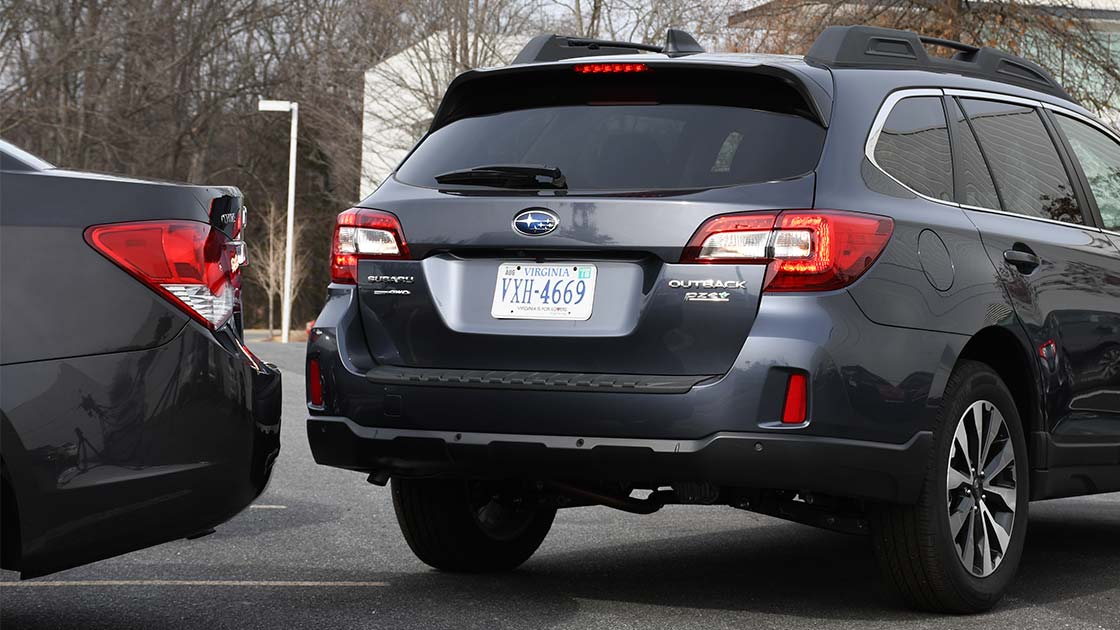Rear Automatic Braking Prevents Fender-Benders, Saves Money

Buying a new car? If you’re trying to decide between a panoramic moonroof or oversized wheels, you might want to put automatic emergency braking, both front and rear, at the top of the list.
Sure, the moonroof looks nice, if it doesn’t leak, and those big wheels are awesome all right, although they may ride a little rough. But the automatic braking can save you big bucks in repair costs and could even prevent a serious accident.
Front automatic emergency braking (AEB) is becoming available on a growing number of models, following tests that showed it could reduce the number of rear-end accidents, thus saving lives. Now, automatic braking in the rear is showing its worth as well.
Rear AEB was the standout feature in the Highway Loss Data Institute’s annual compilation of research on the impact of crash avoidance technologies.
The researchers found that Subaru and General Motoros vehicles equipped with rear AEB had 28 percent fewer property damage claims and 10 percent fewer collision claims across the two manufacturers.
“We haven’t seen that kind of reduction in claims for vehicle and other property damage from any other advanced driver assistance system,” says HLDI Senior Vice President Matt Moore.
The impact of rear AEB on injury crashes was relatively small, which makes sense based on the type of crashes the technology is designed to avoid.
“Backing crashes generally happen at lower speeds than front-to-rear crashes,” Moore says. “That means they’re less dangerous, but the costs from vehicle damage can add up.”
Both front and rear AEB use sensors like cameras or radar to detect when the vehicle is getting too close to an obstacle and automatically apply the brakes to avoid or mitigate collisions.
By the way, if you’re thinking that the back-up camera on your present car works just as well as automated braking, think again.
HLDI found that rear cameras and parking sensors were much less effective. Data from seven other manufacturers showed that rear cameras reduced the frequency of property damage liability claims by 5 percent and actually increased the frequency of collision claims slightly, though that increase was not statistically significant. Parking sensors also reduced the frequency of property damage liability claims by 5 percent and reduced the frequency of collision claims by 1 percent.
“Claims data show that collision avoidance technologies that automatically intervene to prevent or mitigate crashes are more effective than warning-based systems,” says Moore, noting that forward collision warning is also associated with smaller claims reductions than front AEB.
